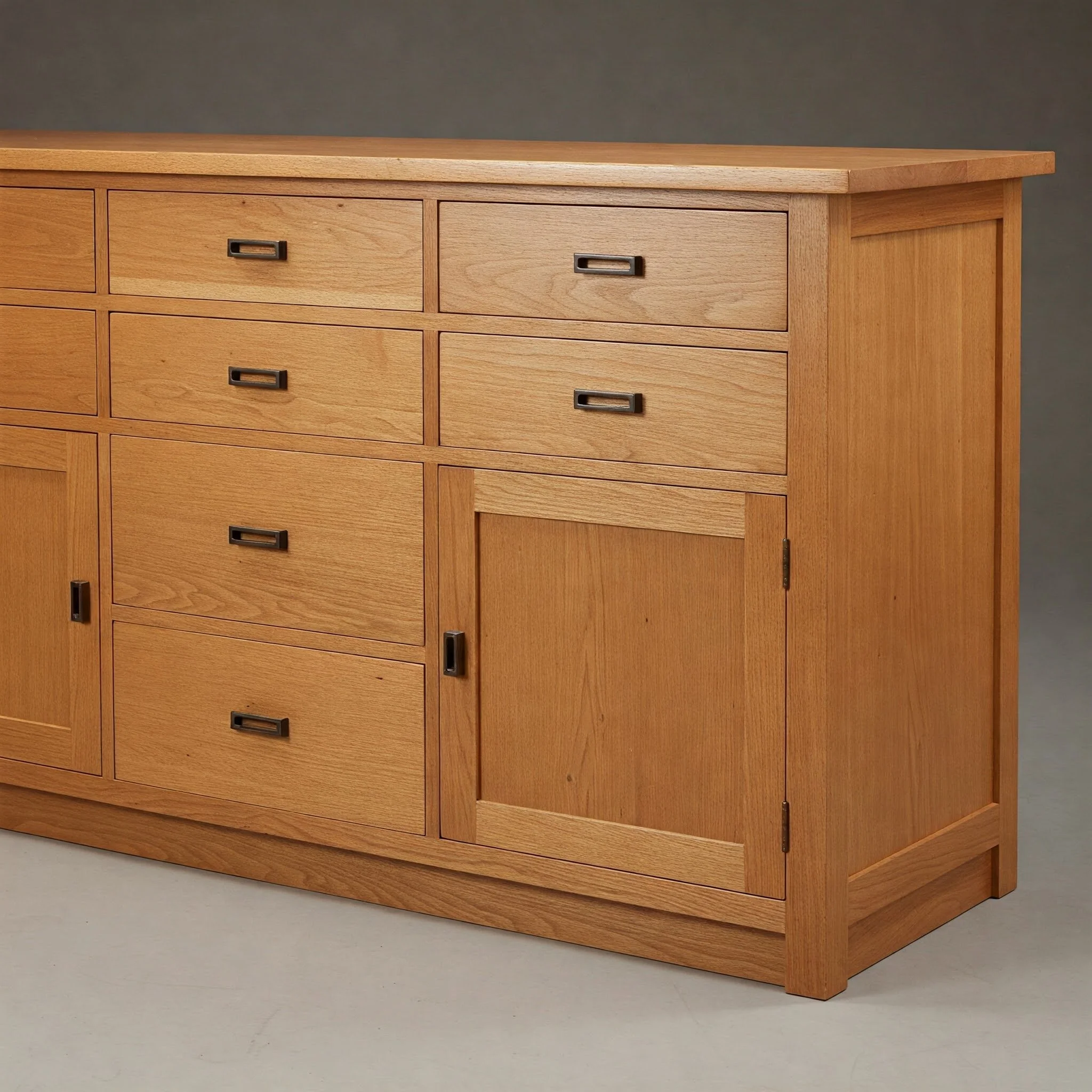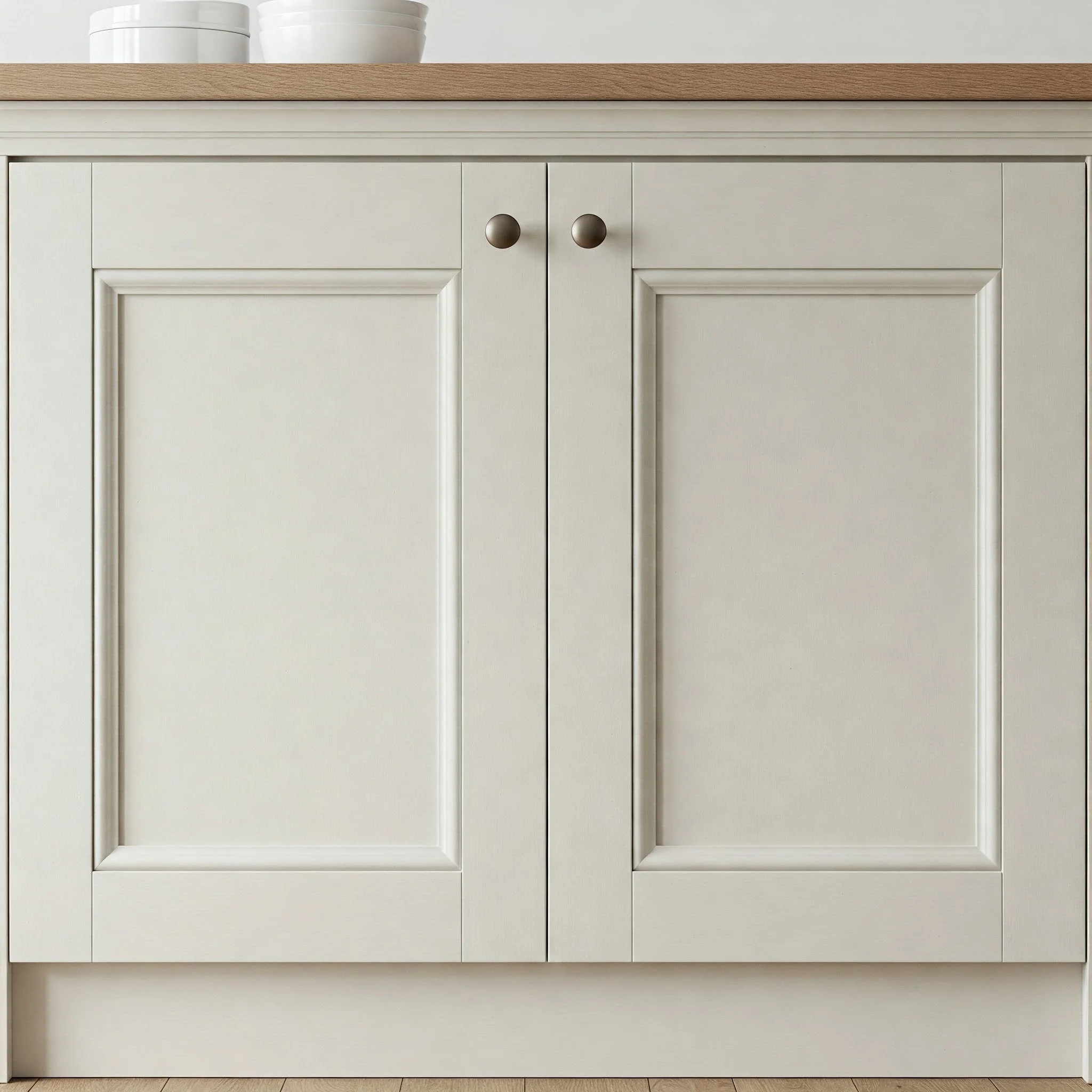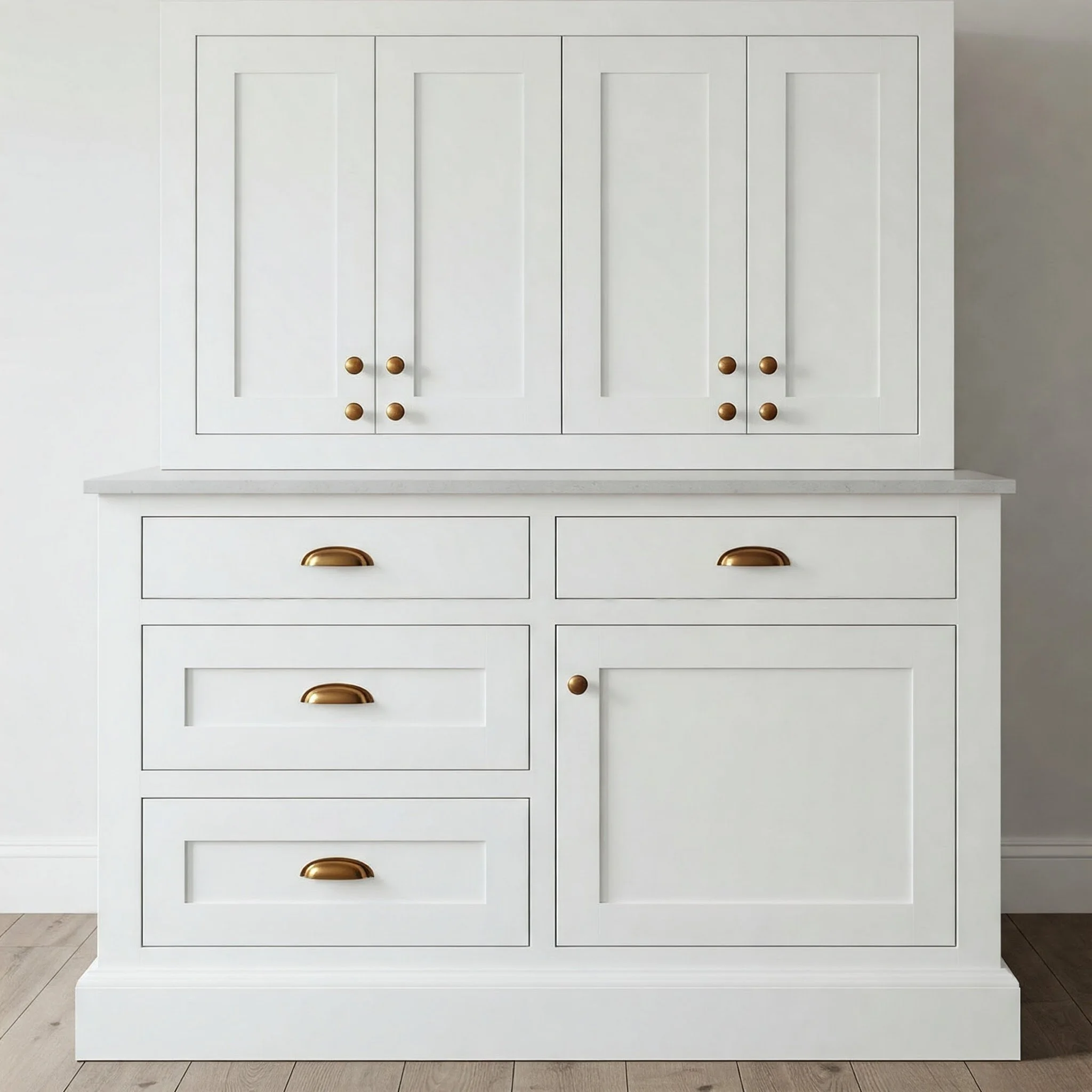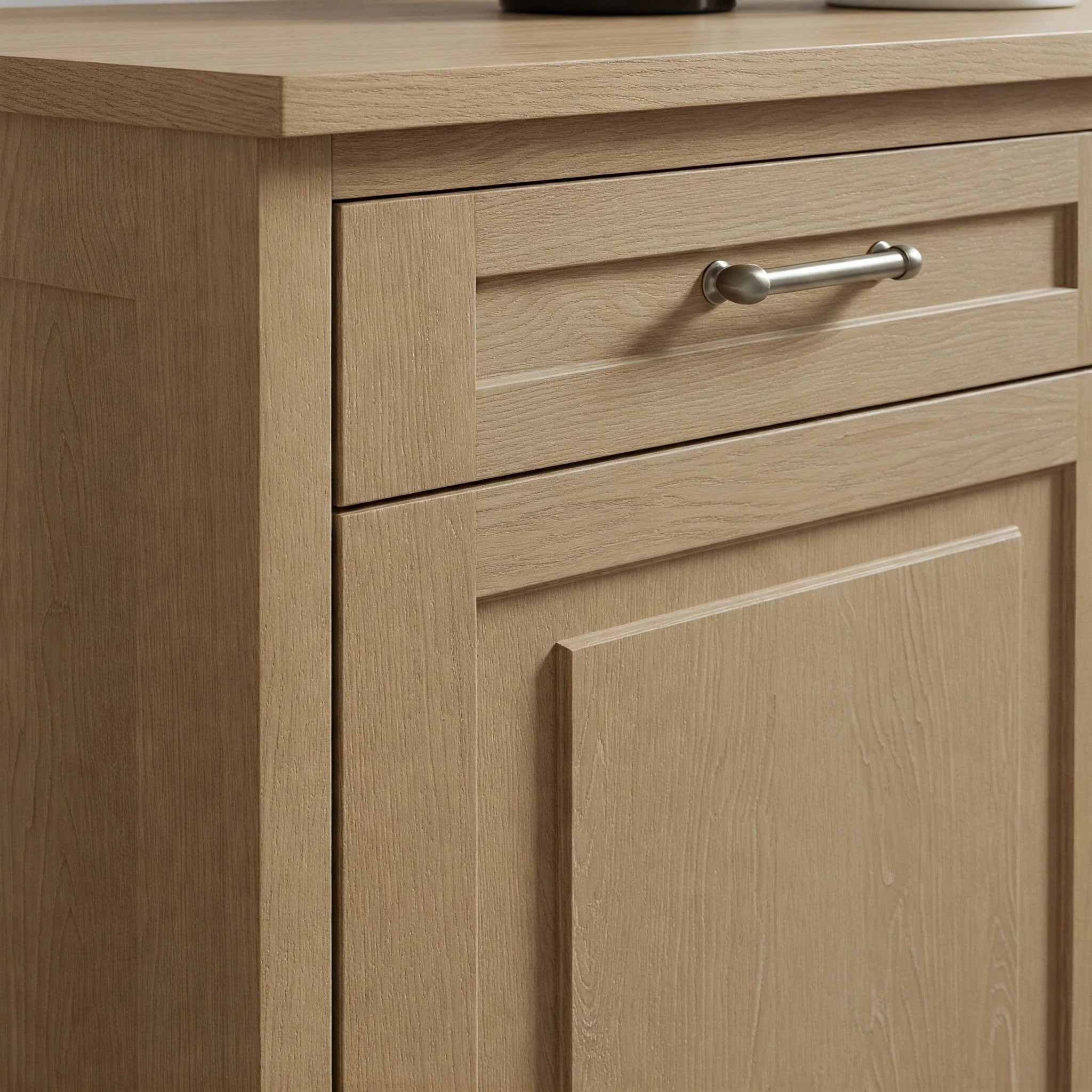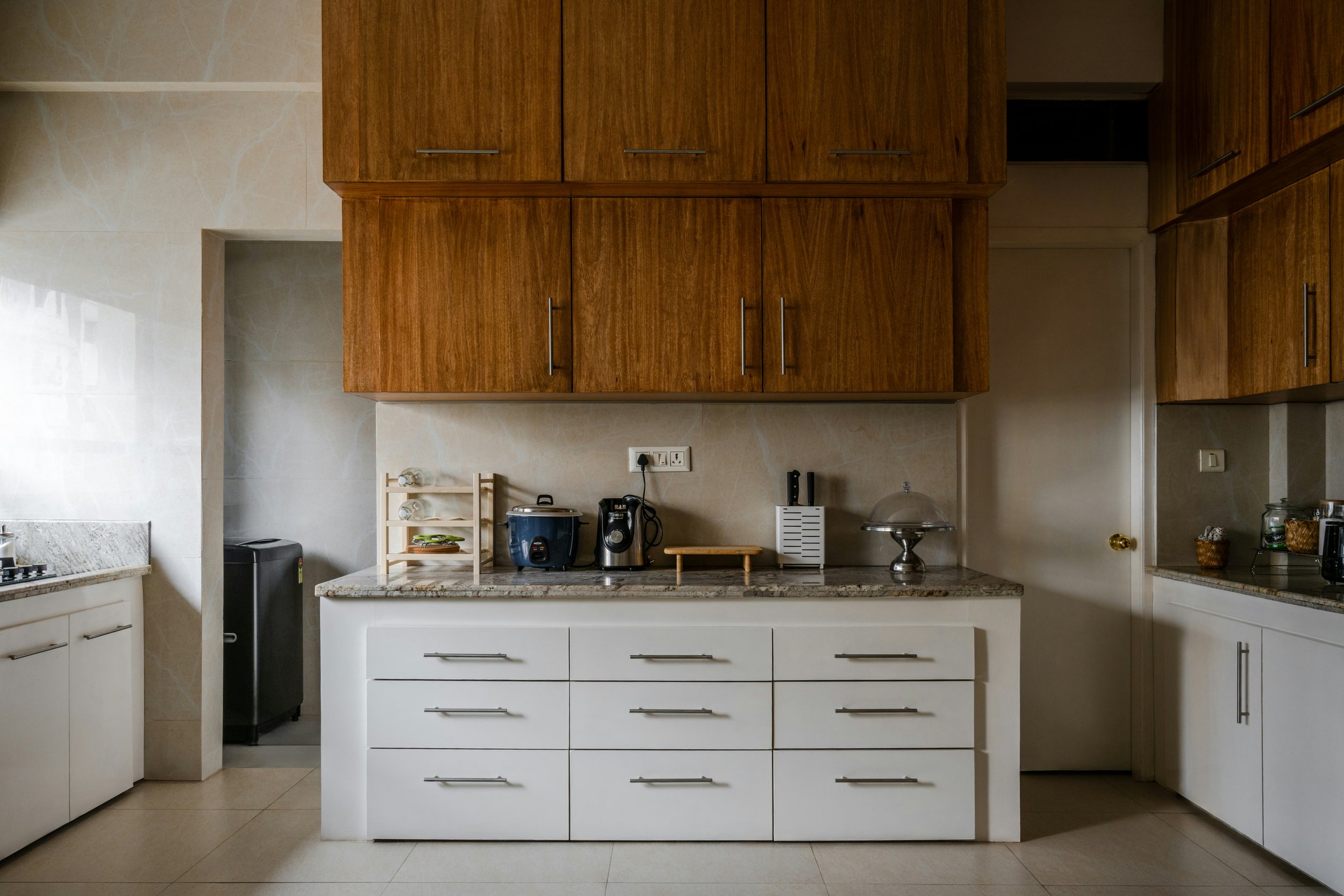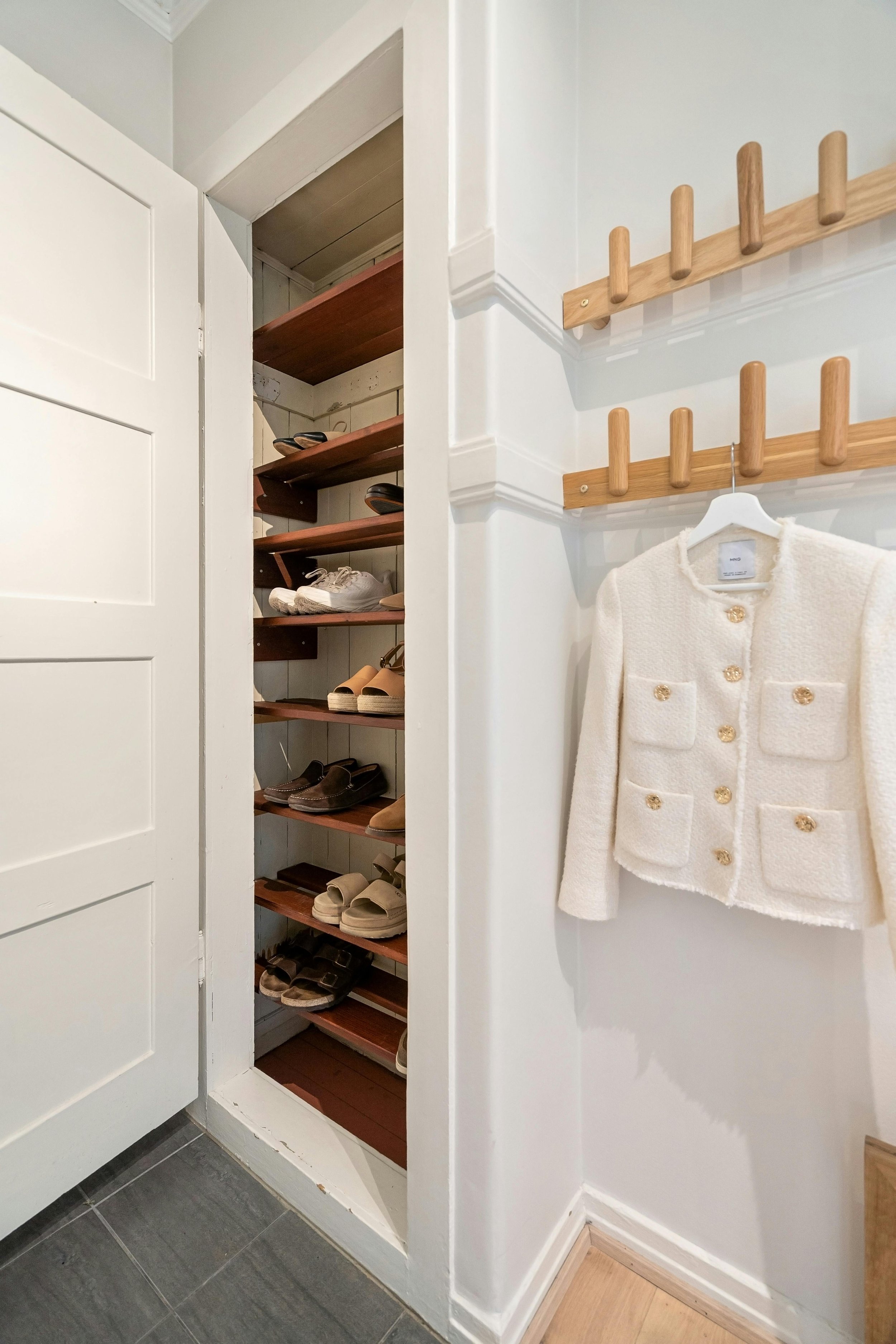What Is a Shaker Cabinet? Definition and Features
Unravel the mystery of Shaker cabinets—learn about their origins, discover their hallmark design features, and explore why they remain timeless in modern homes!
If you've ever wandered through a kitchen showroom or flipped through a home décor magazine, you've probably come across Shaker cabinets without even realizing it. Their clean lines and understated simplicity catch the eye like a well-tailored suit—sharp, classic, and remarkably versatile. But what exactly is the deal with these Shaker cabinets, and why are they so darn popular in both traditional and modern designs? Let’s roll up our sleeves and dive into the world of “What Is a Shaker Cabinet? Definition and Features.” By the end of this article, you’ll not only know their history but also understand their key characteristics and how to incorporate them in your own home.
When you’ve got these cabinets in your space, it’s like having a blank canvas waiting for your unique flair. They’re easy to dress up, tone down, or let stand alone in all their minimalistic glory. Stick around, and we’ll walk you through how Shaker cabinets fit into a variety of styles, how to maintain them, and what to look out for when you’re in the market for a set of your own. So buckle up—it’s about to get interesting!
1. Origins and Historical Background
Before we tackle “What Is a Shaker Cabinet? Definition and Features,” let’s venture back in time to see where this design first sprouted. The Shakers were a religious group who settled in America in the late 18th century. Known formally as the United Society of Believers in Christ’s Second Appearing, the Shakers believed in communal living, celibacy, and absolute simplicity in every aspect of life. Their design principles weren’t influenced by flashy trends or fleeting fads; instead, their furniture was shaped by humility, functionality, and craftsmanship.
Functional Aesthetics: The Shakers insisted on practicality above all else. If a piece of furniture had an unnecessary embellishment, it was considered a distraction.
Quality Over Quantity: Because they believed their work was an act of faith, each piece was crafted with meticulous attention to detail.
Timeless Simplicity: By shunning ornamentation, Shaker artisans created pieces that looked as good 200 years ago as they do today.
It’s no small wonder that their furniture—particularly those iconic cabinets—still resonates. The Shaker philosophy of form following function is as popular now as it was back then. It’s a testament to how something so simple can pack a powerful design punch, even in our modern, high-tech world.
2. The Essence of Shaker Cabinet Design
What sets Shaker cabinets apart from all the rest? It boils down to a few key features that embody a “less is more” philosophy. So, before we look deeper into “What Is a Shaker Cabinet? Definition and Features,” let’s analyze the fundamental building blocks:
Recessed Panel Doors
Shaker cabinets typically feature a five-piece door design consisting of four narrow frames and a flat, recessed center panel. This minimalism lies at the heart of the Shaker style, offering a clean, crisp appearance without any fancy details.Sturdy Construction
Traditional Shaker cabinets were made from solid hardwood—often pine, maple, or cherry. Even modern interpretations tend to use high-quality materials to preserve that signature durability.Minimal Ornamentation
The Shakers eschewed decorative carvings or fancy hardware, favoring unadorned knobs or simple wooden pulls. Today’s homeowners might switch in a bit of modern metallic hardware to match their interior style, but the overall design remains understated.Straight Lines and Subdued Profiles
If you’re looking for curves, flamboyant moldings, or intricate trim—well, Shaker isn’t your style. The entire foundation of these cabinets is built on straight edges, geometric simplicity, and subtle outlines.
By concentrating on these core design aspects, Shaker cabinets have carved a niche in the world of timeless cabinetry. They walk that fine line between traditional charm and modern minimalism—a balance that’s incredibly hard to get right.
3. What Is a Shaker Cabinet? Definition and Features (First Mention)
So, let’s circle back to that million-dollar question: What Is a Shaker Cabinet? Definition and Features in a nutshell? Shaker cabinets are an offspring of the Shaker religious sect’s dedication to function, simplicity, and craftsmanship. They’re characterized by:
Recessed, flat center panels
Slim, streamlined frames
Durable construction (wood is the name of the game)
A lack of ornate detailing or carvings
In essence, Shaker cabinets are an ode to utility-driven design. Their beauty isn’t in swirling wood carvings or decorative flourishes; instead, it’s in the clarity of their lines, the unity of their proportions, and the genuineness of their materials. Think of them like a classic white T-shirt—never out of style and endlessly adaptable to any outfit (or décor scheme).
4. Common Materials Used in Shaker Cabinets
One aspect that truly stands out in Shaker furniture is the thoughtful selection of materials. Even in modern times, the ethos remains the same: use quality wood that can handle everyday wear and tear while preserving its elegance. Here’s a quick breakdown:
Maple
Often praised for its light color and smooth grain, maple is a top contender for Shaker cabinets. It’s sturdy yet relatively easy to work with—perfect for those signature clean lines.Cherry
If you’re partial to a warmer, richer tone, cherry might be your best bet. Over time, cherry wood deepens into a reddish-brown hue that complements both traditional and contemporary spaces.Pine
A go-to choice for more rustic interpretations of Shaker design. It’s softer than maple or cherry, which can be a double-edged sword—it’s easier to craft but more prone to dings and scratches.Birch
Offering a consistent texture and color, birch is another favorite for modern versions of Shaker cabinets. It also takes stains well, letting you customize the hue to fit your décor.
In the modern era, some manufacturers opt for engineered woods or veneers to keep costs down. While these can mimic the look of natural wood, purists often argue nothing compares to the real deal. Whichever route you take, just remember that simplicity, durability, and practicality are the Shaker cabinet trifecta.
5. Modern Takes on Shaker Cabinets
Now, if you think a design that’s been around for centuries must be outdated, think again! Shaker cabinets have proven so adaptable that they’re frequently found in contemporary lofts, coastal cottages, and even ultra-modern minimalist apartments. But how do you make an age-old design feel fresh?
Bold Colors: Traditionally, Shaker cabinets were left in natural wood tones or painted in muted hues. Nowadays, designers aren’t shy about using bold colors like navy blue, emerald green, or even charcoal black.
Mixed Materials: Pairing Shaker cabinets with sleek metal hardware or glass inserts can add a hint of glamour without veering into gaudiness.
Open Shelving Concepts: Some modern kitchens integrate open shelving alongside Shaker cabinets, blending old-school charm with new-age design.
Minimalist Hardware: If the Shakers loved simple wooden knobs, modern homeowners might choose streamlined pulls or even hidden handles for a more contemporary, seamless look.
The beauty of a Shaker cabinet lies in its chameleon-like nature. It can blend with a farmhouse sink and rustic décor just as seamlessly as it meshes with gleaming quartz countertops and stainless-steel appliances.
6. Shaker Cabinet Layouts and Where They Shine
No two kitchens are the same—and thank goodness, right? Shaker cabinets can adapt to a wide range of floorplans, sizes, and shapes. From a compact galley kitchen to a sprawling open-concept living space, here’s how:
Small Kitchens
Shaker cabinets work wonders here because their clean lines create an illusion of space. If you’re strapped for square footage, opt for lighter paint colors and less bulky hardware to maintain an airy feel.L-Shaped or U-Shaped Layouts
With these configurations, Shaker cabinets offer a consistent, cohesive look that ties the entire space together. The uniformity of recessed panels and straight edges helps ground the design.Island Installations
If you’re lucky enough to have an island, consider installing Shaker cabinets on its base for extra storage. Whether you keep the island the same color or paint it a contrasting hue, Shaker cabinets ensure a sleek aesthetic.Open-Concept Spaces
In open-concept living areas, Shaker cabinets can serve as the perfect bridge between your kitchen and adjoining rooms. Their unpretentious style harmonizes with almost any décor—be it industrial lighting fixtures or a plush living room sofa.
Regardless of your kitchen’s shape or size, Shaker cabinets offer a timeless framework that can easily be customized to suit your fancy. They’re like that friend who gets along with everyone—always reliable, never overbearing, and effortlessly chic.
7. “What Is a Shaker Cabinet? Definition and Features” in Modern Décor (Second Mention)
Let’s pause for a second and reiterate “What Is a Shaker Cabinet? Definition and Features” in the context of modern homes. While the label itself might sound antiquated, it’s anything but! In a world where many people crave a clutter-free environment—both physically and mentally—Shaker cabinets shine like a beacon of straightforwardness. They echo a modern minimalistic vibe, minus the cold, sterile feel some ultra-minimalist designs can bring.
Straightforward Layouts: The lack of ornate detailing feels refreshingly current.
Adaptive Color Schemes: White, gray, black, bold greens—the Shaker style welcomes them all.
Understated Hardware: Keep it simple with subtle metallic pulls or completely conceal the hardware for a futuristic vibe.
Seamless Integration: Pair them with hardwood floors or even polished concrete—Shaker cabinets can handle it.
When combined thoughtfully, these features can turn a Shaker cabinet from a piece of historical curiosity into the star attraction of your modern sanctuary.
8. Pros and Cons of Shaker Cabinets
No cabinet style is without its perks and pitfalls. Although Shaker cabinets have many advantages, they’re not invincible. Let’s call a spade a spade:
Pros
Timeless Aesthetic: Shaker design has endured for centuries, so you know it’s not going out of style anytime soon.
Versatility: Whether you lean modern, rustic, or somewhere in between, these cabinets can adapt.
Easy Maintenance: With fewer nooks and crannies, they’re simpler to keep clean than heavily detailed cabinets.
Solid Investment: Many homebuyers recognize and appreciate the Shaker style, which could bump up your home’s resale value.
Cons
Potential Price: Genuine hardwood Shaker cabinets can be expensive, especially if you opt for high-end species like cherry or oak.
Limited Ornamentation: If you adore decorative moldings and flamboyant details, Shaker may feel too plain.
Risk of Over-Simplicity: In a large, open space, an all-Shaker design can sometimes appear underwhelming if not paired with the right accessories or color schemes.
Still, for most homeowners, the benefits far outweigh the drawbacks. If you value timelessness and adaptability, Shaker cabinets might be calling your name.
9. Care and Maintenance
You don’t have to be a neat freak to keep your Shaker cabinets looking spiffy. But, like any other piece of furniture, a little TLC can go a long way:
Wipe Them Down Regularly
Use a soft, damp cloth to remove dust and spills. Steer clear of harsh chemicals or scrubbing pads that can damage the finish.Opt for Mild Cleansers
A mixture of gentle dish soap and water works wonders on wood surfaces. Rinse with a clean cloth and dry immediately to avoid moisture damage.Watch Out for Excess Humidity
Wood can warp or swell if the humidity is too high. Keep your kitchen well-ventilated or use a dehumidifier in particularly muggy climates.Polish or Oil as Needed
If your cabinets are made from natural wood (not painted), applying a suitable furniture polish or oil can revive the surface and keep it hydrated. Always test in a small, hidden area first.
By dedicating just a little time each week—or even every other week—you’ll prolong the life of your Shaker cabinets, ensuring they stay as splendid as the day they were installed.
10. Styling Tips for Shaker Cabinets
While Shaker cabinets are inherently minimalist, you can still impart plenty of personality. Here are a few suggestions for making them your own:
Try a Two-Tone Approach: Paint your upper cabinets in a lighter shade and your lower cabinets in a darker hue. This not only creates visual interest but can also make your kitchen seem larger.
Experiment with Backsplashes: Shaker cabinets pair nicely with subway tiles, mosaic patterns, or even bold, geometric tiles. The clean lines of the cabinets help balance intricate tile designs.
Mix Metal Finishes: Who says you can’t combine brass knobs with stainless-steel appliances? Go ahead—add a little flair.
Open Shelving Accents: Replace a section of cabinets with open shelving to display glassware, cookbooks, or decorative pieces. It adds a sense of depth and character.
Remember, simplicity doesn’t have to mean boring. If anything, the understated nature of Shaker cabinets invites creativity in other areas of your design.
Conclusion
There you have it—the lowdown on “What Is a Shaker Cabinet? Definition and Features.” These cabinets embody a rare blend of simplicity, durability, and timelessness that has kept them on design radars for centuries. They might have humble origins, but don’t let that fool you into thinking they’re outdated. With a few clever tweaks—like bold colors, funky hardware, or imaginative backsplashes—Shaker cabinets can feel as cutting-edge as any modern design.
And isn’t that the magic of good design? The ability to adapt and stay relevant while still holding tight to core principles. Whether you’re renovating a fixer-upper, building your dream home, or just giving your current kitchen a mini facelift, Shaker cabinets could be the perfect touch to elevate your space. They’re like that reliable friend who’s always down to help you move, all while cracking jokes and keeping things light—functional, dependable, and definitely not a bore.
So, go ahead and embrace the Shaker spirit of simplicity, authenticity, and quality craftsmanship. From the color of your cabinets to the hardware that adorns them, you’ve got plenty of room to let your personality shine. After all, Shaker cabinets aren’t just about looking pretty—they’re about living gracefully in the heart of your home.
Read next: How to Make DIY Shaker Cabinet Doors at Home
Frequently Asked Questions
Q1: Are Shaker cabinets only available in wood finishes?
A: Definitely not! While traditional Shaker cabinets highlight natural wood grains, modern versions come in various paint finishes—from classic white or gray to more adventurous colors like navy and emerald. It’s all about personal preference and matching your existing décor.
Q2: What if I have a very contemporary or industrial-style home—will Shaker cabinets clash?
A: Heck no! One of the best things about Shaker cabinets is their ability to blend into nearly any style. In an industrial-style home, for instance, pair them with metal pendant lights, exposed ductwork, and maybe even a polished concrete floor to achieve a harmonious yet edgy vibe.
Q3: Are Shaker cabinets hard to keep clean?
A: Quite the contrary. Because of their flat, recessed panels, you won’t have to worry about intricate carvings or moldings that trap grease and dust. A quick wipe-down usually does the trick, making them a breeze to maintain.
Q4: Do Shaker cabinets increase my home’s resale value?
A: While we can’t guarantee real estate miracles, Shaker cabinets are considered a safe bet for boosting appeal. Their timeless style generally resonates well with potential buyers, so it’s often a worthwhile investment.
Q5: Can I install Shaker cabinets on my own, or should I hire a professional?
A: It depends on your DIY experience and comfort level. Installing cabinets requires precise measurements, leveling, and sometimes specialized tools. If you’re handy and enjoy a challenge, you might tackle it yourself. Otherwise, hiring a pro ensures a polished finish and fewer headaches.
